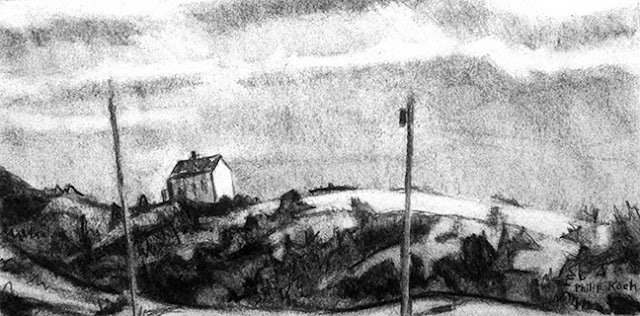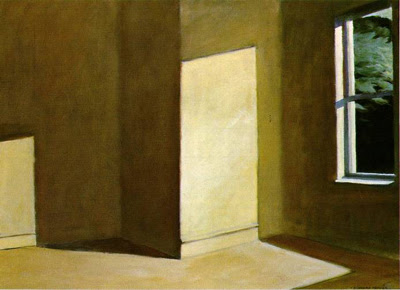One of Paintings Secret Ingredients

Painting is a language that has been handed to us by people from the past. What we choose to say with it can vary, but we have to fully employ the tools the language places in our hands.
Ran into some images like the one above by the painter Max Ernst (German 1891- 1976). I don't usually spend a lot of time looking at surrealist art, but I've always had a soft spot for some of Ernst's paintings. Like this one. In particular I love the smoothly gradating sky contrasting the jumble of leaves and vines in the foreground. This is one creepy jungle, a place I'd rather not spend the night. Its moodiness is increased by how Ernst balances the earth and the sky together so well.
After his second marriage to the heiress Peggy Guggenheim (which you can't help but wonder about as a career move), Ernst married the painter Dorothea Tanning. Here's one of her paintings below. One of the fun things in it is to let your eye be drawn down the hallway until you reach the only slightly opened doorway. You know something is being concealed from you yet you feel an emotional presence so strongly at far right hand side of the painting.

I like both of these paintings quite a bit. Varied as they are, both make great use of gradations of tone and color to make what would be empty, flat surfaces come to life. Try a little experiment. Where ever you are sitting now, look around you to see if you can find a large empty surface in your surroundings that is genuinely unchanging in terms of its tones or its color. If you stare for a minute at even the most flat looking surface it almost always reveals its gradation.
Tones and colors vary because we inhabit a world of real spaces and changing lights. Our minds long ago internalized this. Even our dreams are crammed full of varying gradated surfaces. They evoke a sense of atmosphere and mood almost instantly.
Here below is a marvelous painting by the German 19th century landscape painter Caspar David Friedrich. More than half of it is "empty" sky, but what an emptiness! It's full of a softly pulsating energy of the hidden sun and the slow sweep of the clouds.
Beginning painters usually don't gradate their surfaces very much, or if they do they tend to wildly over do it with each gradation going all the way from very light to almost black. With experience a painter learns to use this tool carefully, usually letting gradated surfaces be very subtle, as in this wonderful Friedrich oil.
If the purpose of art is to help us learn to enjoy our eyes (which certainly it is, among many other things), spending a moment to study the gradations in this Friedrich, and the Tanning, and the Ernst is worth it. It sharpens our eye to see how the world is presented to us instead of just what we are being shown. That's huge.
Now can anybody tell me where I can get one of those hats like the guys in the Friedrich are wearing? I think I could carry it off pretty well, don't you?



